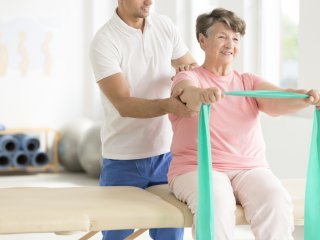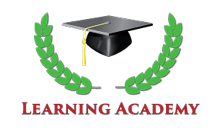
- Description
- Objectives
- Outline
- Materials
- Certification
- System Requirements
- Watch a Demo
In our Physical Therapy Aide program you will learn all the skills needed to begin a career as a physical therapy aide.
Medical Terminology
Quickly master the basics of medical terminology and begin speaking and writing terms almost immediately! This course omits time-consuming, nonessential information and helps you build a working medical vocabulary of the most frequently encountered suffixes, prefixes, and word roots. Medical terms are introduced in the context of human anatomy and physiology to help you understand exactly what they mean, and case studies, vignettes, and activities demonstrate how medical terms are used in practice.
Prerequisite(s): None
Physical Therapy Aide
Thousands of people attend physical therapy schools every day to become a part of this hot career field. In fact, according to the U.S. Department of Labor, employment of physical therapy aides is expected to grow by 29% over the next decade, which is much faster than the average job.
A physical therapy aide most often works under the direction of a physical therapist and/or physical therapy assistant. Physical therapy aide jobs often include keeping the treatment area clean and well organized, as well as to help escort patients in wheelchairs, perform clerical duties, order supplies and more. A physical therapy aide generally needs to be well organized, have patience, and enjoy working with others.
Prerequisite(s): None
After completing this course, you should be able to:
- Identify how to gain and understand the basic word structure in medical terminology
- Recognize how to relate the medical terms to the structure and function of the human body
- Identify body systems, body cavities, and planes of the body
- Define words by dividing them into their component parts
- Recall the terminology used with medical specialists and case reports
At the completion of this course you should be able to:
- List the core elements of medical terminology
- Name the core elements of the physical therapy profession
- Identify the systems of the body and their functions
- Recall the steps to treat common medical disorders
- Recognize the steps to turn, transfer, and position patients
Medical Terminology Module 1
Basic Word Structure
- Word Analysis
- Combining Forms
- Suffixes & Prefixes
- Pronunciation of Terms
- Exercises & Applications
Medical Terminology Module 2
Organization of the Body
- Body Systems and Cavities
- Divisions of the Back
- Planes of the Body
- Pronunciation of Terms
- Exercises & Applications
Medical Terminology Module 3
Suffixes
- Introduction to Suffixes
- Suffixes and Terminology
- Diagnostic & Procedural Suffixes
- Pronunciation of Terms
- Exercises & Applications
Medical Terminology Module 4
Prefixes
- Combining Forms & Prefixes
- Prefixes and Terminology
- Define Common Prefixes
- Pronunciation of Terms
- Exercises & Applications
Medical Terminology Module 5
Medical Specialists & Case Reports
- Medical Specialists
- Combining Forms & Vocabulary
- Case Reports & Terminology
- Pronunciation of Terms
- Exercises & Applications
Medical Terminology Module 6
Body Systems – Part 1
- Cardiovascular System
- Digestive System
- Endocrine System
- Female Reproductive System
- Lymphatic System
Medical Terminology Module 7
Body Systems – Part 2
- Male Reproductive System
- Musculoskeletal System
- Nervous System
- Respiratory System
- Skin & Sense Organs
- Urinary System
Physical Therapy Aide Module 1
Medical Terminology Review
- Pronunciation
- Spelling
- Word Roots
- Combining Vowels/Form
- Prefixes
- Suffixes
- General Rules
- Word Building
- Abbreviations
- Procedural and Diagnostic Billing Codes
- Body Structure
- Organization of the Body
- Anatomical Position
- Body Planes
- Directional and Positional Terms
- Body Cavities
Physical Therapy Aide Module 2
The Profession of Physical Therapy
- History and Evolution of Physical Therapy
- Multidisciplinary Approach to Health Care
- The Rehabilitation Team
- The Role of the Physical Therapy Aide
- History of Physical Medicine
- Physical and Therapeutic Allied Health Careers
- Understanding Medical Ethics and Medical Law
- The Patient and the Health Care Worker
- Patient Medical Records and the Law
- Interprofessional Issues
- Communicating Effectively
- Communication in the Physical Therapy Setting
- Appointment Scheduling
- Using Medical Abbreviations
- Understanding the Patient's Medical Record
- Administrative Role of the Physical Therapy Aide
- Billing, Banking, and Insurance Processing
Physical Therapy Aide Module 3
Scientific Principles
- Understanding the Human Body
- Systems of the Body
- The Musculoskeletal System
- The Digestive System
- The Circulatory System
- The Respiratory System
- The Nervous System
- The Integumentary System
- The Urinary System
- The Endocrine System
- The Reproductive System
- The Skeletal System
- The Axial Skeleton
- The Appendicular Skeleton
- Joints and Movement
Physical Therapy Aide Module 4
Physical Dysfunctions, Safety and Charting
- Treating Common Medical Disorders
- Using Physical Therapy to Treat Burns
- Treatment of Amputation
- Treatment of Genitourinary Disorders
- Safety in the Working Environment
- Practicing Good Body Alignment and Movement
- Asepsis and Infection Control
- Performing Proper Handwashing
- Infection Control
- Preparation for Patient Care
- Management of the Environment
- Body Mechanics
- Verbal Commands
- Patient Preparation
- Transportation
Physical Therapy Aide Module 5
Patient Care Skills & Physical Therapy Modalities
- Turing and Positioning the Patient
- Turing in the Prone Position
- Turning on the Floor Mat
- Turning from a Supine Position to a Side-Lying Position
- Returning from a Supine Position to a Sitting Position
- Types of Patient Transfers
- Preparation for Beginning Transfers
- Standing Transfers
- Bathtub Transfers
- Sitting Transfers
- Drawsheet Transfers
- Pneumatic Lift Transfers
- One-Person Transfer from Floor to Wheelchair
Physical Therapy Aide Module 6
Physical Therapy Modalities
- Tips on Preambulation Teaching
- Choosing the Appropriate Device
- Gait Training and Gait Deviations
- Therapeutic Exercises
- Measuring Muscle Strength
- Skill or Coordination Exercises
- Range of Motion Exercises
- Superficial Heating Agents
- Deep Heating Agents
- Ultrasound
- Hydrotherapy
- Cold Therapy
- Massage
- Cervical Traction
- Specialized Clinical Procedures
- Electroneural Stimulation
- Application of a Cast
- Administration of Medication
- Specialized Reflex Tests
- Orthotics and Prosthetics
- Sports Bandaging and Taping
- Pet Therapy
- Career Skills and the Physical Therapy Aide
- The Job Search
- The Cover Letter & Resume
- Interviewing
- Finding Job Leads
**Outlines are subject to change, as courses and materials are updated.**
Ed4Career is committed to being both environmentally conscious and making it easier for you to study! We’re making your education mobile! All of our textbooks are now provided as eTextbooks. You can access them on your laptop, tablet, or mobile device and can study anytime, anywhere.
The move away from physical books to eTextbooks means you get the latest, most up-to-date version available. This also makes your training more accessible, so you can study anywhere you have your phone or tablet. The best part is that all materials are included in your training cost so there are NO extra fees for books!
**Certification exams are not included in the cost of the course.**
Internet Connection
- Broadband or High-Speed - DSL, Cable, and Wireless Connections
*Dial-Up internet connections will result in a diminished online experience. Classroom pages may load slowly and viewing large audio and video files may not be possible.
Hardware Requirements
- Processor - 2GHz Processor or Higher
- Memory - 1 GB RAM Minimum Recommended
PC Software Requirements
- Operating Systems - Windows 7 or higher
- Microsoft Office 2013 or higher. Also, you could use a general Word Processing application to save and open Microsoft Office formats (.doc, .docx, .xls, .xlsx, .ppt, .pptx)
- Internet Browsers - Google Chrome is highly recommended
- Cookies MUST be enabled
- Pop-ups MUST be allowed (Pop-up Blocker disabled)
- The Kindle Reader App or VitalSource Bookshelf App are needed for many of our courses (No special equipment needed. This can be downloaded for FREE onto your computer.)
- PowerPoint Viewer (if you do not have PowerPoint)
- Adobe PDF Reader
- QuickTime, Windows Media Player &/or Real Player
MAC Software Requirements
- Operating Systems - Mac OS x 10 or higher with Windows
- Mac office programs or a Word Processing application to save and open Microsoft Office formats (.doc, .docx, .xls, .xlsx, .ppt, .pptx)
- Internet Browsers- Google Chrome is highly recommended
- Cookies MUST be enabled
- Pop-ups MUST be allowed (Pop-up Blocker disabled)
- The Kindle Reader App or VitalSource Bookshelf App are needed for many of our courses (No special equipment needed. This can be downloaded for FREE onto your computer.)
- PowerPoint Viewer (if you do not have PowerPoint)
- Adobe PDF Reader
- Apple QuickTime Media Player


